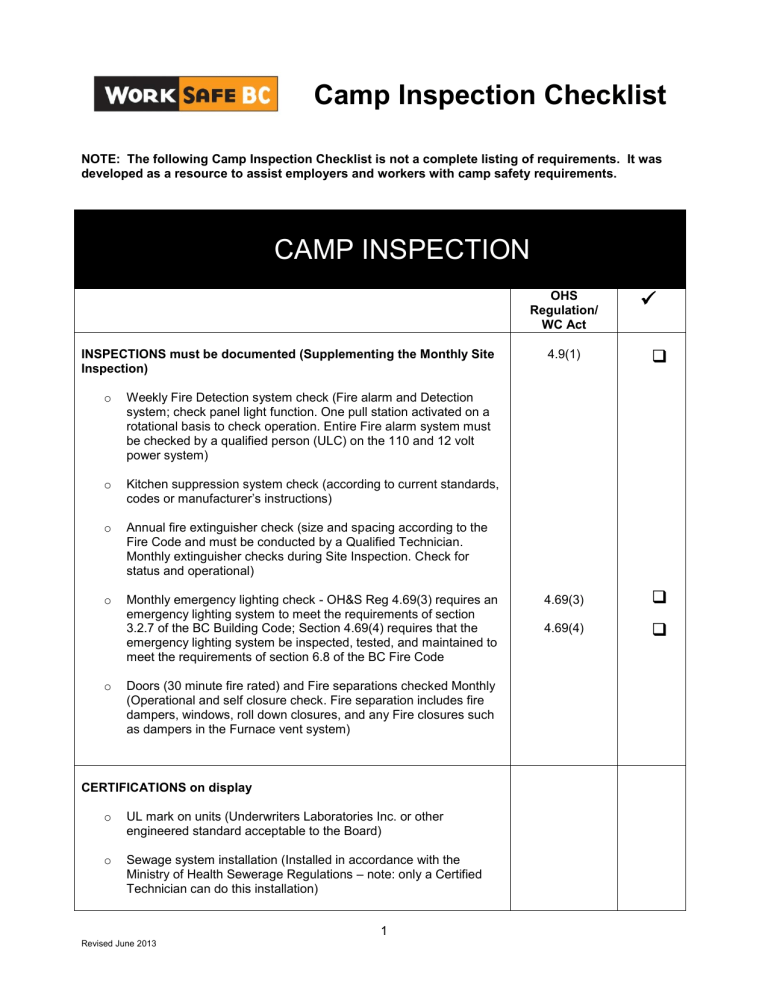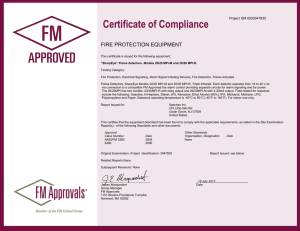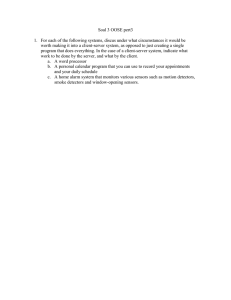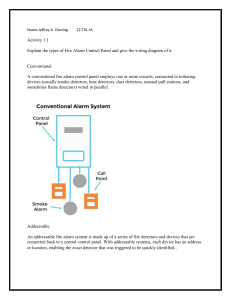
Camp Inspection Checklist NOTE: The following Camp Inspection Checklist is not a complete listing of requirements. It was developed as a resource to assist employers and workers with camp safety requirements. CAMP INSPECTION OHS Regulation/ WC Act INSPECTIONS must be documented (Supplementing the Monthly Site Inspection) o Weekly Fire Detection system check (Fire alarm and Detection system; check panel light function. One pull station activated on a rotational basis to check operation. Entire Fire alarm system must be checked by a qualified person (ULC) on the 110 and 12 volt power system) o Kitchen suppression system check (according to current standards, codes or manufacturer’s instructions) o Annual fire extinguisher check (size and spacing according to the Fire Code and must be conducted by a Qualified Technician. Monthly extinguisher checks during Site Inspection. Check for status and operational) o Monthly emergency lighting check - OH&S Reg 4.69(3) requires an emergency lighting system to meet the requirements of section 3.2.7 of the BC Building Code; Section 4.69(4) requires that the emergency lighting system be inspected, tested, and maintained to meet the requirements of section 6.8 of the BC Fire Code o Doors (30 minute fire rated) and Fire separations checked Monthly (Operational and self closure check. Fire separation includes fire dampers, windows, roll down closures, and any Fire closures such as dampers in the Furnace vent system) CERTIFICATIONS on display o UL mark on units (Underwriters Laboratories Inc. or other engineered standard acceptable to the Board) o Sewage system installation (Installed in accordance with the Ministry of Health Sewerage Regulations – note: only a Certified Technician can do this installation) 1 Revised June 2013 4.9(1) 4.69(3) 4.69(4) o Potable Water tests o FoodSafe o WaterSafe o Gas Inspection (propane) CAMP ORIENTATION o Young or New Worker Orientation – OH&S Reg 3.22 to 3.25 o Workplace conduct for residence o ETS - Environmental Tobacco Smoke o Hazardous Wildlife precautions and procedures o Drug and Alcohol Policy o Firearm Policy and Storage o Bio-hazards and Washing expectations o Waste disposal Procedures o Emergency & Evacuation Procedures (Posted Fire Safety Plan must be posted in each room and emergency procedures near main entrances) o Working Alone 3.22 3.25 4.21 5.26 5.36(1)(a) 4.32 GENERAL COMPLIANCE issues o Illumination on all outside entrances o Illuminated exit signs on all exit doors o Fuel storage as on permit from BC Fire Commission; (safe storage). Multi-fuel skids to meet the requirements of BCFC 4.3.2.3 and CSA B-149.2. (20 feet distance between Diesel and Propane, 25 feet distance between Gasoline and Propane and stored 50 feet distance to any building). o Fire separation walls – 30 minute fire rating between bedrooms (1/2” drywall), 45 minute fire rating between hallways (5/8” drywall) o Fire rated vents on furnace, ducts and doors o Burn Pan under water heaters o Fuel shut off valve and wrench (if needed) near gas fired appliances o All exit doors with quick release handles, door openings not blocked or exposed to a hazard; safe access 2 Revised June 2013 o Automatic door closures (ULC rated) on Fire Separations doors and suite doors (20 minute fire rating, 45 minute rating for all other Fire Separation doors) o Female rooms, wash facilities and toilets have a lockable door o Basic First-aid o Written agreement between employers on First-aid coverage for their workers staying in camp o 3.16 Safe Premises 4.1 o Safe Machinery and Equipment 4.3 o Emergency Preparedness 4.13(1) o Emergency Response Plan, Evacuation Plan o Violence in the Workplace 4.2.7 o Exposure Control Plan and Procedures – OH&S Reg 5.54 for Air contaminants, Bio-hazards(sharps), Hygiene and infectious diseases 5.54 o Lock-out or De-energization of equipment or machinery 10.2 o Fall Protection for Roof work or work over 10 feet 11.3 o Electrical generator properly grounded o Protection of compressed Gas 5.36 o Garbage and Waste storage must be 10 meters from any building o Fuel storage is compliant with the Fire Permit. All fuel Storage vessels grounded, includes Trailers with fuel (such as Propane tanks) attached o Carbon Monoxide detectors required near all carbon producing appliances (110 volt hard wired) COMPLEX - 6 rooms or more o Fire Detection System - 110 volt hard wired system o All sleeping units – heat detectors wired into central alarm, smoke alarms not wired into central alarm system (after Nov 2006 new code does not require heat detectors; now called Fire Detectors. But prior installations must retain and maintain heat detectors) o Fire System detection panel o Pull stations in hall ways o Fire detectors in mechanical areas; i.e. over furnaces, hot water tanks o Smoke detectors in hall ways and exit stairways. 3 Revised June 2013 o Fire Detectors required in all enclosures (janitor closets, storage, service laundry rooms) o Water hose system for fire-fighting purposes for camps with more than 30 beds SINGLE TRAILER UNITS o 110 volt hard wired smoke alarm in each room and all interconnected o One fire extinguisher on outside of unit mounted mid-point o Minimum 10 meters of separation between units, or 1.22 meters end to end with a 45minute fire rating on the end walls o Fire Detectors required in all enclosures (janitor closets, storage, service laundry rooms) OTHER JURISDICTIONS o British Columbia Objective Based Building Code o Health Code – food, sanitation, potable water o British Columbia Objective Based Fire Code (including reference documents, NFPA (National Fire Publication Association), ULC, CSA) o Labour Code o Human Rights Code and Law o Federal Firearms Law o Canadian Electrical Code Part One (Ground fault Circuit Interrupters) 4 Revised June 2013


